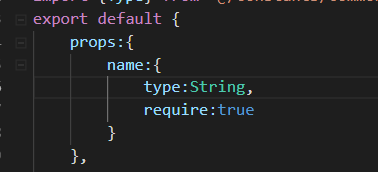1,父子,通过props 传递
子组件生命,父组件传递!

2, 兄弟组件通讯,用this.$parent通讯
App.vue
<template>
<div id="app">
<!-- <div id="nav">
<router-link to="/">Home</router-link> |
<router-link to="/about">About</router-link>
</div>
<router-view/> -->
java
<!-- <Child name = "action"></Child> -->
<Child ></Child>
<Detail></Detail>
</div>
</template>
<script>
import Child from '@/components/child.vue'
import Detail from "@/components/detail.vue"
import { connect } from 'tls';
export default {
components:{
Child,
Detail
},
methods:{
show(message){
console.log("..." + message)
}
}
}
</script>
<style lang="scss">
#app {
font-family: Avenir, Helvetica, Arial, sans-serif;
-webkit-font-smoothing: antialiased;
-moz-osx-font-smoothing: grayscale;
text-align: center;
color: #2c3e50;
}
#nav {
padding: 30px;
a {
font-weight: bold;
color: #2c3e50;
&.router-link-exact-active {
color: #42b983;
}
}
}
</style>
两个孩子 child.vue
<template>
<div class="app">
child
{
{name}}
<p @click="go">go...</p>
</div>
</template>
<script>
import {Type} from "@/constants/common.js"
export default {
props:{
name:{
type:String,
require:true
}
},
methods:{
go(){
console.log("hello")
this.$emit(Type,"vue is so easy!")
}
},
mounted(){
this.$parent.$on(Type,function(msg){
console.log(msg)
})
}
}
</script>
<style >
</style>
detail.vue
<template>
<div class="app">
child
dog small dog! small cat!
<button @click="smile">$parent</button>
</div>
</template>
<script>
import {Type} from "@/constants/common.js"
export default {
props:{
},
methods:{
[Type](){
console.log(".....")
this.$parent.$emit(Type,"smile is so easy!")
}
}
}
</script>
<style >
</style>
中间遇到一个常量文件
common.js
export const Type = "smile";我的理解很简单,就是俩兄弟通讯,通过父亲来通讯
这个猜疑链就是如果主君开始猜疑臣子,那么臣子要么被差一点被干掉,要么好一点卸甲归田(极少数),要么干脆造反。
如果答主看过琅琊榜,那可能会更形象一些。
琅琊榜一的设定就是这样,主人公一家对皇帝忠心耿耿,立下赫赫战功,最终被诬杀。甚至杀死自己亲儿子的时候也毫不犹豫。
因为你威胁到我的皇位了,我不知道你有没有反叛的心,但是你有反叛的能力。这个猜疑链在皇上心中已经形成,因为人心隔肚皮,皇帝永远不知道臣子到底会怎么想。
所以历史上聪明一点的人,一般就主动交权来打破猜疑链了。通常也会有个好下场,比如说曾国藩。
如果不交呢?
我不知道皇帝有没有怀疑我,虽然我战功赫赫,可能已经功高震主,他也早就会有防备之心,可能稍有风吹草动就会造反了。
所以,君疑臣则诛 臣疑君则反
这就是古代帝王和臣子的猜疑链,历史上有很多次外患还未解除,就开始大杀功臣的事情,比如太平天国,比如南宋王朝。
各种造反也是比比皆是。比如玄武门兵变,兄弟三人血刃相见。再比如朱棣造反
其他通讯方式
vuex 还有$bus 其核心原理,还是观察者模式,我就不写了!
有兴趣的伙伴可以看看provide 和reject